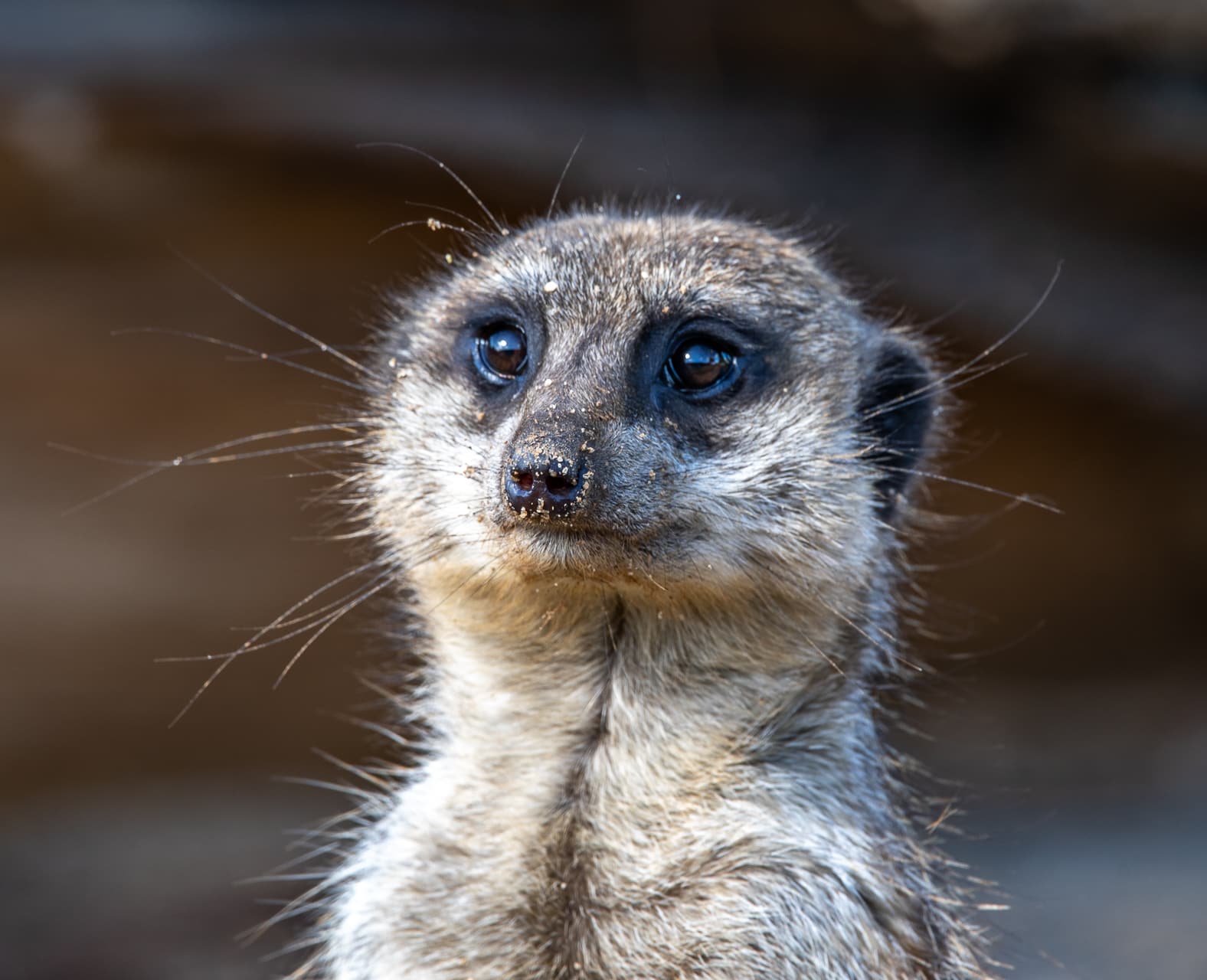
Ever wondered about the secret lives of those adorable, desert-dwelling critters known as meerkats? Sure, you might have caught a glimpse of their antics on a nature documentary or two, but there's so much more to these fascinating animals than meets the eye. Meerkats are not just cute; they're complex creatures with social structures, survival strategies, and behaviors that would make any soap opera look tame in comparison. From their unique family dynamics to their surprising skills, prepare to be amazed by 20 meerkat facts that will completely change the way you see these furry little survivors. Ready to have your mind blown by the intriguing world of meerkats? Let's dig in!
Key Takeaways:
- Meerkats are social animals with unique communication skills, hunting techniques, and family dynamics, making them essential to their ecosystem's balance and a fascinating subject for research and conservation efforts.
- Through their appearance in popular culture and portrayal as intelligent and quirky characters, meerkats have captured the hearts of people worldwide, raising awareness about their conservation and the importance of preserving their natural habitats.
What Are Meerkats?
Meerkats, small mammals belonging to the mongoose family, are known for their upright posture and social behavior. These fascinating creatures inhabit the deserts and grasslands of southern Africa, where they live in large groups called mobs or clans. With sharp claws for digging and keen eyesight to spot predators, meerkats are well-adapted to their environment.
How Do Meerkats Communicate?
Communication among meerkats is vital for their survival. They use a variety of vocalizations, body language, and scent markings to convey messages to each other. Whether it's alerting the group of a predator's approach or coordinating a hunt, every meerkat plays a role in ensuring the mob's safety and success.
-
Meerkats have over 30 different sounds they use to communicate, ranging from warning calls to messages about food.
-
Each meerkat has a unique job; some serve as lookouts, while others are hunters or babysitters for the group's young.
Meerkat Diet and Hunting Techniques
Despite their small size, meerkats are skilled hunters. Their diet mainly consists of insects, but they also eat small mammals, birds, and plant matter. Hunting is a group effort, with each member participating to feed the clan.
-
Meerkats are immune to certain venoms, allowing them to eat scorpions and snakes without harm.
-
They often stand on their rear legs and use their tail for balance while scanning the horizon for food or threats.
The Social Structure of Meerkat Groups
Living in groups of up to 50 members, meerkats exhibit a complex social structure. This hierarchy is essential for the mob's overall function and survival, with a dominant pair leading the group and making crucial decisions.
-
The dominant female is the only meerkat in the group that typically breeds, ensuring her offspring have the best chance of survival.
-
Meerkats take turns being sentinels, watching for predators while others forage or rest.
Meerkat Pups: The First Months of Life
Meerkat pups are born blind and helpless, relying entirely on the group for protection and nourishment. The first few months of their lives are critical, as they learn essential survival skills from older members of the mob.
-
Pups start to leave the burrow for short periods when they are about three weeks old, always under the watchful eyes of adult meerkats.
-
By six weeks, meerkat pups are introduced to solid food, which is often regurgitated by adults to help wean them off milk.
The Role of Meerkats in Their Ecosystem
Meerkats play a significant role in their ecosystem, controlling insect populations and serving as prey for larger predators. Their burrowing activity also helps aerate the soil, promoting plant growth.
-
Meerkats are preyed upon by eagles, hawks, and jackals, making their sentinel duty crucial for survival.
-
Their burrows can have multiple entrances and chambers, providing homes for other animals when abandoned by meerkats.
Meerkat Adaptations to Desert Life
Surviving in the harsh conditions of the desert requires special adaptations. Meerkats have evolved several traits that help them cope with extreme temperatures and scarce water sources.
-
Dark patches around their eyes reduce glare from the sun, improving their vision during daylight hours.
-
Meerkats can survive without direct water sources, getting the moisture they need from their food.
Conservation Status of Meerkats
While meerkats are not currently listed as endangered, their populations face threats from habitat loss and human activities. Conservation efforts are crucial to ensure these charismatic animals continue to thrive in the wild.
-
Habitat destruction due to farming and urban expansion poses a significant threat to meerkat populations.
-
Ecotourism, when managed responsibly, can help raise awareness and funds for meerkat conservation.
Fascinating Meerkat Behaviors
Meerkats exhibit many intriguing behaviors that have captivated researchers and animal lovers alike. From their grooming rituals to the way they play, every action has a purpose in meerkat society.
-
Meerkats use grooming not only for cleanliness but also to strengthen social bonds within the group.
-
They engage in playful wrestling matches, which help young meerkats develop the skills they need for hunting and defense.
-
Sunbathing is a common morning activity for meerkats, helping them warm up before they start their day.
Meerkats in Popular Culture
Meerkats have become popular figures in movies, television shows, and books, often portrayed as quirky and intelligent characters. This media exposure has increased public interest in meerkat conservation and behavior.
-
The meerkat character Timon, from Disney's "The Lion King," has brought worldwide attention to these animals.
-
Documentaries and reality shows featuring meerkats have helped educate the public about their complex social structures and behaviors.
-
Children's books and educational programs often feature meerkats to teach lessons about teamwork, survival, and the natural world.
A Final Peek at Meerkat Marvels
We've journeyed through the fascinating world of meerkats, uncovering secrets and marvels that stretch beyond their adorable appearances. From their complex social structures to their incredible survival tactics, these creatures continue to astonish and educate us. Their lives in the harsh environments of the African savanna showcase resilience, cooperation, and a remarkable adaptation to the world around them. As we close this chapter, let's carry forward a newfound appreciation for these small but mighty animals. Their stories remind us of the wonders hidden in the natural world, waiting to be discovered. Meerkats aren't just subjects of cute videos or zoo attractions; they're emblems of survival, unity, and the intricate tapestry of life on Earth.
Frequently Asked Questions
Was this page helpful?
Our commitment to delivering trustworthy and engaging content is at the heart of what we do. Each fact on our site is contributed by real users like you, bringing a wealth of diverse insights and information. To ensure the highest standards of accuracy and reliability, our dedicated editors meticulously review each submission. This process guarantees that the facts we share are not only fascinating but also credible. Trust in our commitment to quality and authenticity as you explore and learn with us.


